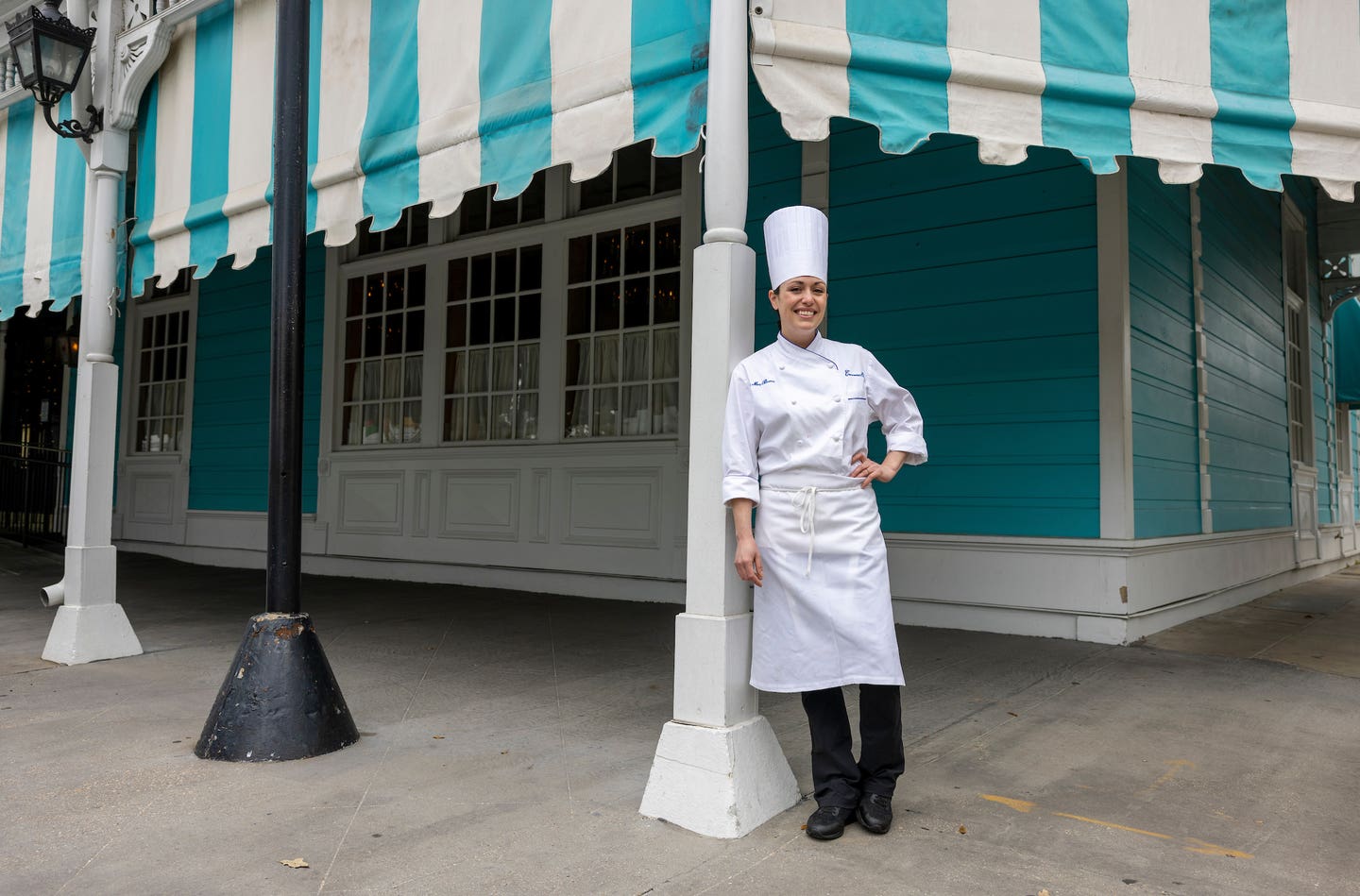
In New Orleans, Celebratory Mardi Gras Foods Capture the Spirit of Sharing
Dishes like grillades and grits helped Chef Meg Bickford of Commander’s Palace find her calling.
On special occasions, Chef Megan Bickford’s family in southern Louisiana would throw a pig party—or a boucherie, as they call it in Cajun country. Her parents, siblings, aunts, uncles, and cousins would slaughter a hog and spend the entire day turning the meat into chops, bacon, sausage, cracklings, boudin, and other porcine delicacies. The pièce de résistance was always her grandmother’s blood stew, but the recipe was lost with her passing and nobody has quite been able to replicate it—not even Bickford herself, who went on to become the executive chef at the most famous restaurant in New Orleans.
“I'm from a big south Louisiana family, and everybody knows how to cook,” she says. “It’s just such a big part of our culture, knowing how to feed people.”
For Bickford, being the first woman to helm the kitchen of Commander’s Palace, a century-old mecca of Cajun and Creole cuisine in the New Orleans Garden District, does not define her career. Neither does following in the footsteps of legendary Commander’s Palace alumni like Paul Prudhomme and Emeril Legasse.
For her, being a chef is about the boucheries, the neighborhood seafood boils, and the giant pots of gumbo and jambalaya shared with friends, family, and random passersby on Mardi Gras Day. “I feel like I get to provide those experiences for people and bring all of that emotion that food can carry, into the dining room.”
Bickford, now 35, moved around the South as a child, but she and her brother always went back to Louisiana for summers and Mardi Gras festivities. When she decided to pursue a career in cooking, her father insisted she also earn a science degree as a fallback. She found a loophole at the Chef John Folse Culinary Institute in Thibodaux, Louisiana: The school offers a “bachelor of science” in culinary arts.
“If I was going to study cooking, I didn’t think there would be a better place,” she says. “It has the cuisine that I love, that I have true ties to, and that I really wanted to explore deeper.”
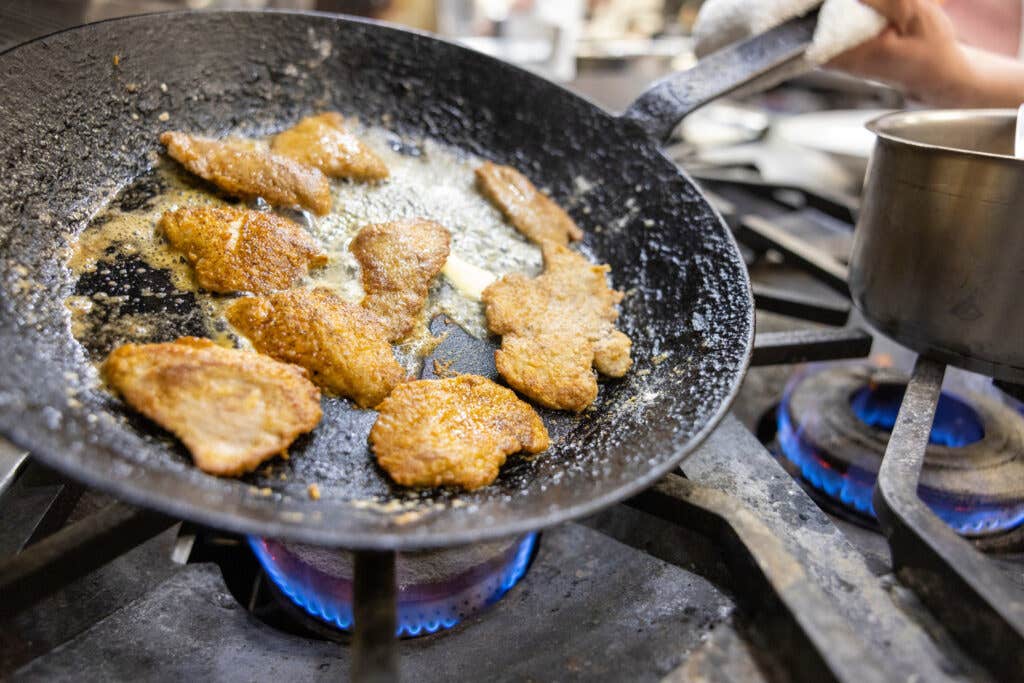
She was referring, of course, to the cuisine of lower Louisiana, with its regional blend of French-, Spanish- and African-inspired flavors. Those unfamiliar with the food of this region might indeed recognize dishes like jambalaya, gumbo, and bread pudding. They might even know that Creole dishes tend to be saucy with lots of tomato, while Cajun dishes tend to feature a lot of smoked meat and spicy boiled seafood. (Crawfish étouffée, red beans and rice: Creole. Boiled crawfish, andouille sausage: Cajun. Gumbo, jambalaya: It depends.) But that barely skims the surface of the culinary bayou.
“Here, you say ‘étouffée’ and people say, ‘Ok, what’s your étouffée? Do you make it with roux or not make it with roux?’” says Bickford. “For every dish, everyone has a different way their grandmother made it.”
She rattles off dishes like “maque choux” and “shrimp remoulade” as if everyone knows them—because in her world, everyone does. Growing up, while children in other parts of America ate pancakes and bacon on Sunday mornings, Bickford enjoyed her mother’s grillades and grits, a savory Creole breakfast of saucy braised veal perfect for fueling up before a long day of Mardi Gras parades. (Or, for the grown-ups, banishing a hangover the next morning.)
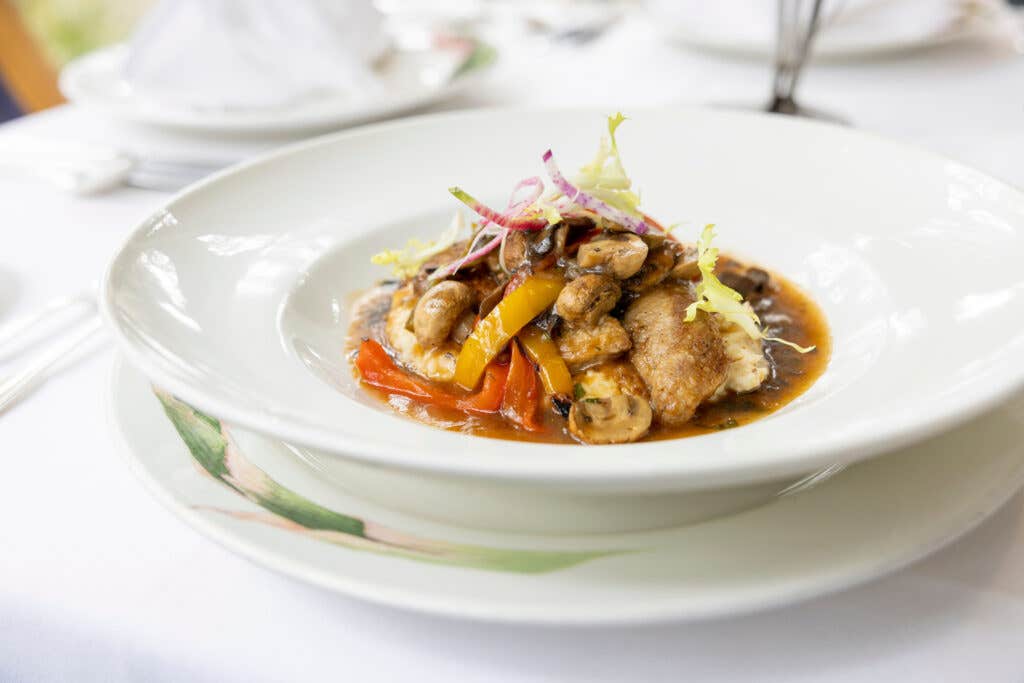
Bickford made her own version of grillades and grits (which uses a light veal sauce with house-made whey curd folded into the grits) for the menu at Commander’s Palace, the historic restaurant that has drawn generations of gourmands to New Orleans since Emile Commander founded it in 1893.
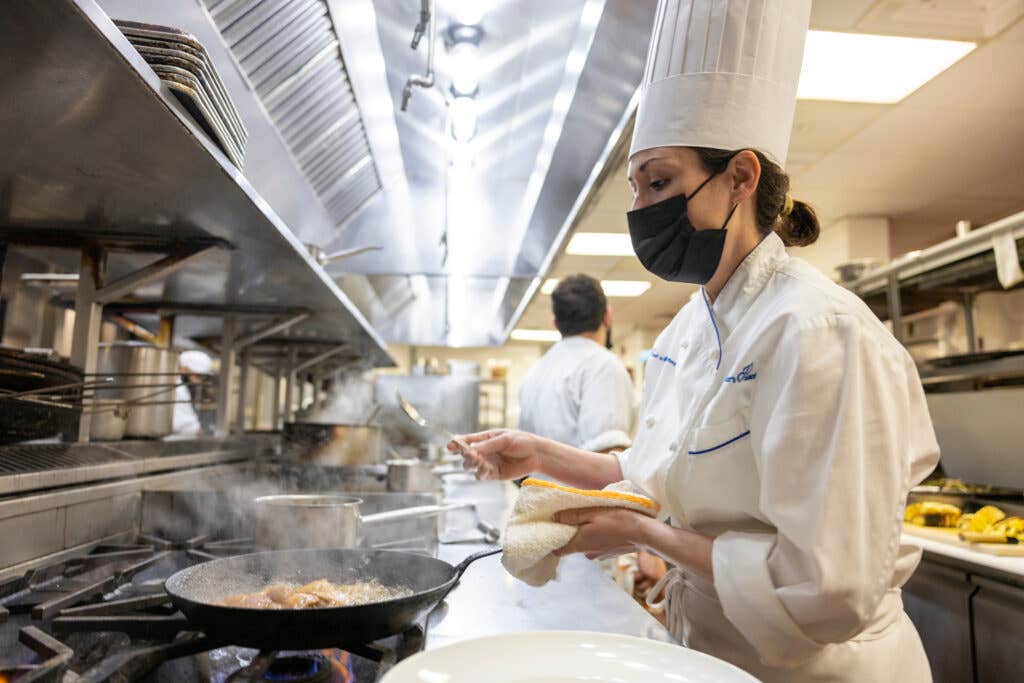
Bickford joined Commander’s Palace as a cook in 2008, fresh out of culinary school. Before that, she had been feeling confident and was jonesing to test her mettle in a professional kitchen. But when she first shadowed at Commander’s Palace, she found herself in a whole new league. Waiters would call out the orders, once, before vanishing back into the dining room, and the cooks would prepare the dishes from memory, keeping three or four tickets in their heads at a time. Everyone operated with a speed and grace Bickford had never seen. “How quickly these professionals worked, how in tune they were to the heartbeat of the restaurant…I just realized how much I had to learn,” she recalls.
After a stint at one of the establishment’s sister restaurants, Bickford earned the role of executive chef at Commander’s Palace in 2018, becoming the first woman to hold that position. Though Bickford is proud of that honor, she hopes patrons will also appreciate her culinary skill.
“Everybody wants to talk about the fact that I was the first female chef,” she says. “So what though? Can we talk about the job?”
Bickford’s rapid rise through one of the world’s most famous culinary scenes took commitment, drive, and sacrifice, especially in a field still rife with sexism and misogyny. She notes that she didn’t do it alone, and had the support of mentors and colleagues who guided her to where she is today and taught her the importance and value of a career in service.
“To us, we look at it as, ‘Today we serve you. Tomorrow, you serve me.’ Because it's that kind of culture. It's just what we do. It's in our DNA,” says Bickford.
The Louisiana spirit of service, sharing, and mutual mirth is not just a quirk of the restaurant staff at Commander’s Palace, Bickford says. It is baked into Cajun and Creole cuisine itself, with plenty of hearty, sharable one-pot staples like jambalaya and gumbo made to be scooped out for any hungry visitors. This spirit is evident in the boucheries, at the jazz block parties, and most of all, during Mardi Gras celebrations, when the entire city throws open its doors for one giant party.
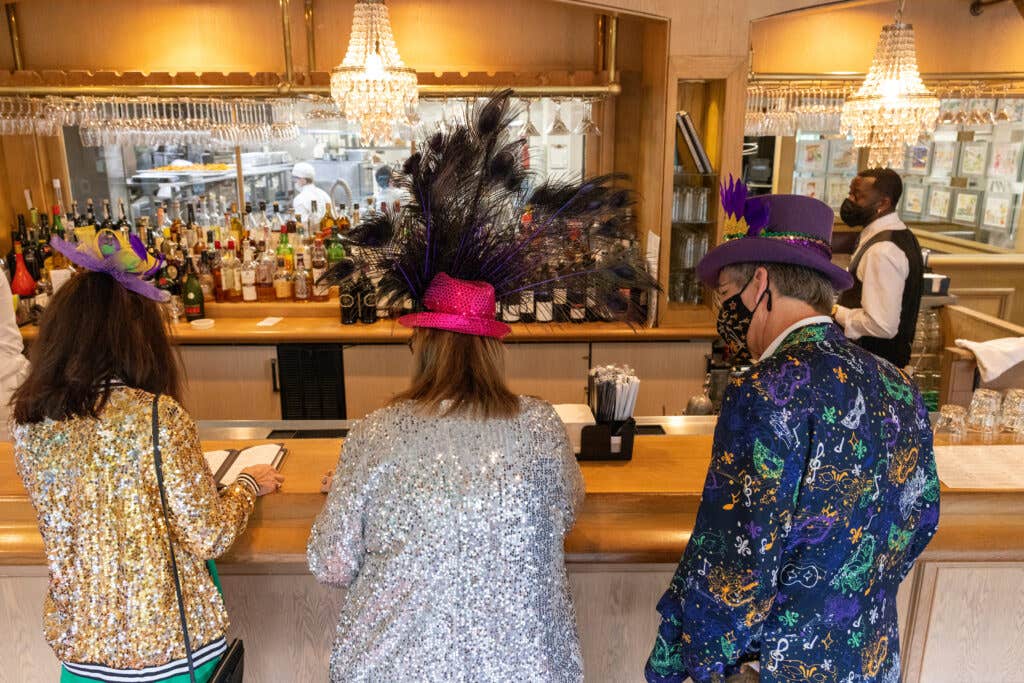
While prepping for Mardi Gras weekend, I asked Bickford what I should bring for a day of parties and parades: What snacks should I pack? Should I take a cooler? What’s the best strategy for lunch planning?
Her advice? “Don’t bring anything at all. If you’re hungry, you will find food. If you’re lonely, you will find friends. If you find friends, you will find drink. We’re the only city in the world where you can pull this off.”
Wander into the French Quarter, and someone will hand you a daiquiri and deck you out in beads. You might be served a styrofoam bowl of red beans and rice under the oak trees of St. Charles Avenue, or be invited into a party in a shotgun house on Magazine Street—probably with a pot of grillades and grits simmering on the stove.
“It wasn't necessarily the actual food that got me into cooking,” Bickford said. “It was the power food has over people. It can heal you when you're down. It can help you celebrate the most joyous occasions. I wanted to be a part of that.”
Recipe
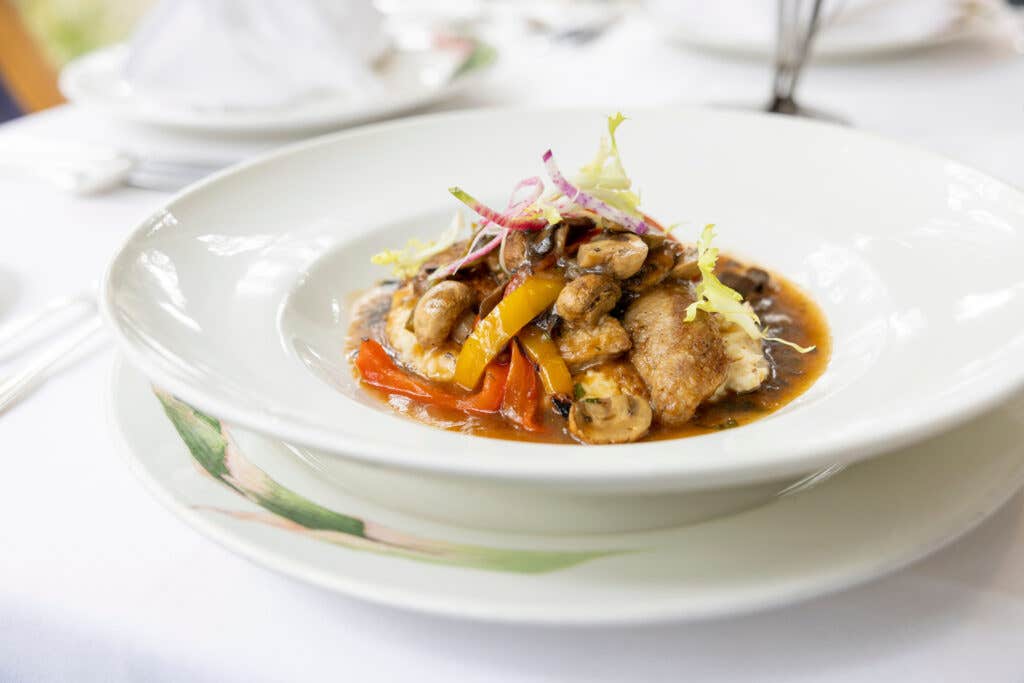
Keep Reading
Continue to Next Story










